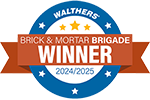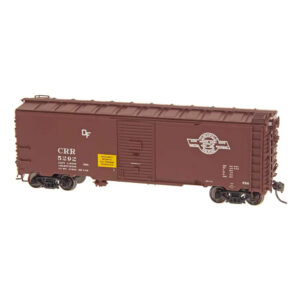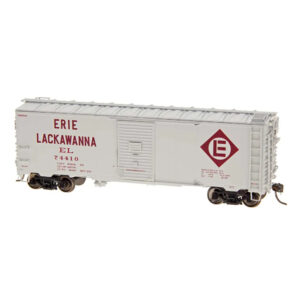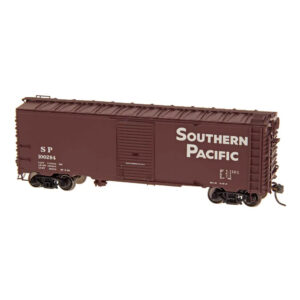40' Post War Box Car
Prototype Information
The term “40′ post-war boxcar” refers to a standard 40-foot-long railroad boxcar manufactured in the United States during the late 1940s and early 1950s. These cars emerged in response to the post-World War II economic boom, as railroads sought to replace outdated and worn equipment with modern, efficient designs to handle the surge in freight demand.
Built to AAR (Association of American Railroads) standards, these boxcars featured:
Roof Styles: Varied designs, such as flat, Murphy, or diagonal panel roofs, depending on manufacturer and customer specifications.
Doors: Sliding or plug doors, with widths often tailored to specific freight needs.
End Designs: Common features included Dreadnaught, improved Dreadnaught, or other reinforced end styles.
Each railroad often introduced minor modifications to suit its unique operational requirements while adhering to general AAR guidelines. These boxcars were versatile and became a staple of freight operations, playing a crucial role in the modernization of North American railroading. They were widely used for a variety of goods, from agricultural products to manufactured goods, throughout the mid-20th century.
Showing all 4 results
-
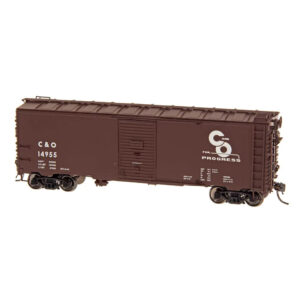
Intermountain HO 40′ Post War Box Car Cheasepeake & Ohio
$26.00 Select options This product has multiple variants. The options may be chosen on the product page -

Intermountain HO 40′ Post War Box Car Clinchfield
$26.00 Select options This product has multiple variants. The options may be chosen on the product page -

Intermountain HO 40′ Post War Box Car Erie Lackawanna
$26.00 Select options This product has multiple variants. The options may be chosen on the product page -

Intermountain HO 40′ Post War Box Car Southern Pacific
$26.00 Select options This product has multiple variants. The options may be chosen on the product page

